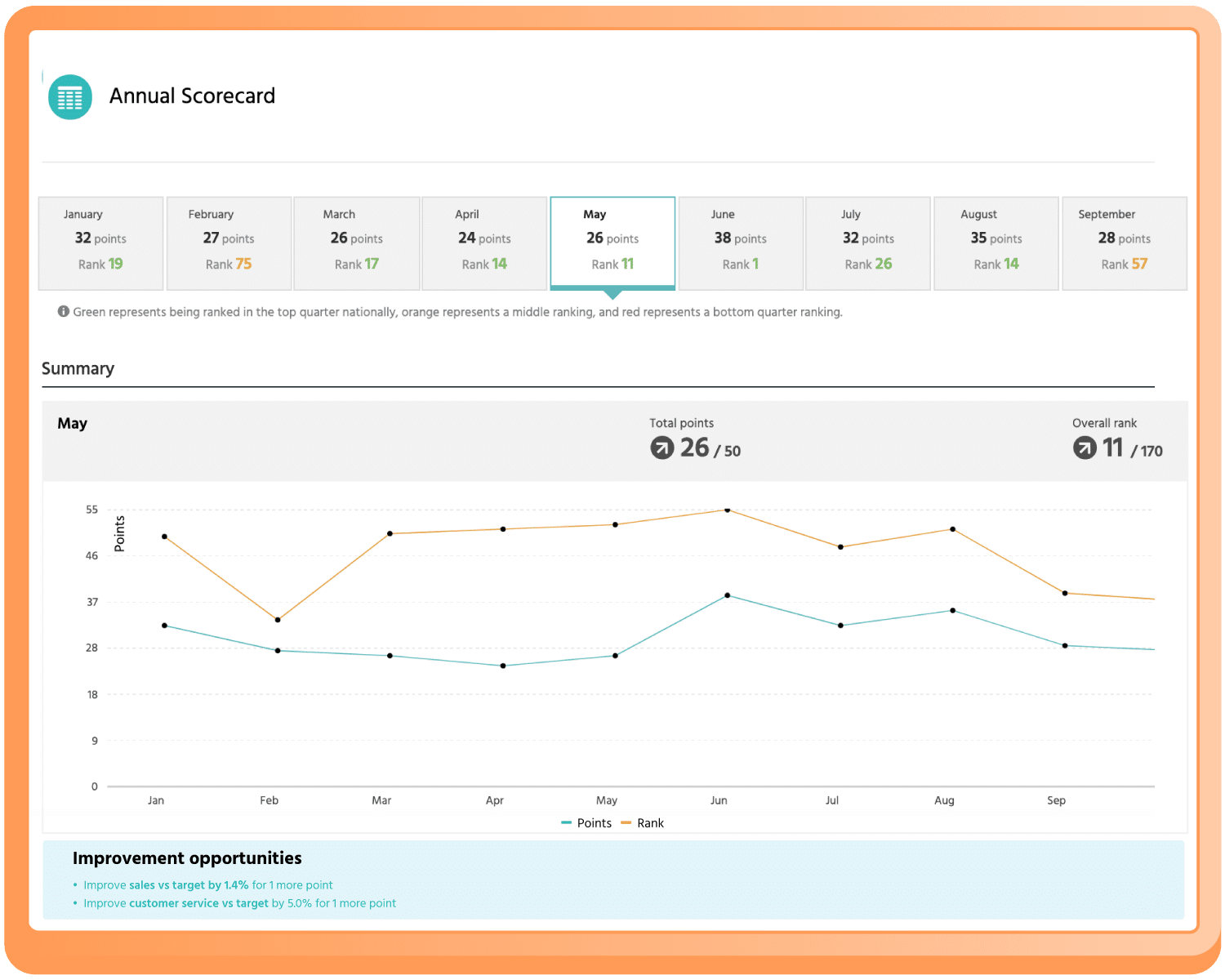Balanced Scorecard and Business Intelligence: Ideas for Improvement
2020 has been a year of reflection for many businesses, and 2021 requires putting into action changes that will enable a more sustainable future. Better understanding strategy and data are central to this — and this is what balanced scorecards and business intelligence are all about. This article will show you what these tools are, how they interact with each other, and what else is needed to thrive in the future.
Using business intelligence to create meaningful actions and outcomes has been the driving force behind our company and software. Loop, our BI platform, combines your data with visual displays and communication tools, including balanced scorecards, to empower you to go beyond analysis and actually improve performance. Here, we are going to look at ways that the balanced scorecard improves business intelligence, and how to take your performance analysis to the next level.
What is a balanced scorecard?
As the saying goes, “what gets measured gets done”. Balanced scorecards are all about that. While they are widely used around the world, they aren’t exactly new. In fact, organisations have been using balanced scorecards since the 90s.
In 1990, Dr. Robert Kaplan and Dr. David Norton conducted a year-long study on performance measurement. They found that no single set of measures was enough to give a comprehensive view of a business — especially measures of financial performance. Managers needed a balanced presentation of both operational and financial measures to track and improve performance. Kaplan and Norton then designed the balanced scorecard as a strategy map to provide top managers with the full picture of their performance based on four perspectives:
- Customer perspective: time, quality, service, cost.
- Internal process perspective: productivity, quality, etc.
- Learning and growth perspective: talent, information technology, culture, etc.
- Financial perspective: sales growth, market share, shareholder value, etc.
The strategic alignment of these perspectives helps you:
- Minimise information overload by focusing on a handful of critical measures
- Consider the strategic objectives together and how they may impact each other
- Visualise the strategy and communicate it both internally and externally
- Improve performance measurement
- Uncover problems and identify solutions
That said, these benefits should ultimately lead to improved outcomes in the long term — not just processes. And outcomes are the result of data-driven decisions.
How the balanced scorecard is deployed with business intelligence
Effectively, the balanced scorecard is just a methodology. In theory, you can use the scorecard approach manually to interpret data. But before that, you need to collect, organise, and analyse data within a strategic context. Doing that manually is time-consuming and runs a high risk of error. This is where business intelligence comes in — it processes raw data to derive insights and help you make sound decisions.
Nowadays, there are many suites of software and services you can use to make sense of data. Many of these business intelligence tools have balanced scorecard features that use data to provide a bird’s eye view of performance. Combining the analytical efficiency of business intelligence with the strategic clarity of scorecard dashboards allows you to save time and actually turn data into meaningful insights.

This is exactly what Loop is designed for. It displays data coherently and clearly, allowing you to:
- Build balanced scorecards across multiple levels of your hierarchy
- Monitor the KPIs that matter the most
- Score and rank your network at KPI level and overall performance
- Identify strengths and weaknesses
- Surface insights and turn them into action plans
- Track the actions taken and measure their impact – something that traditional BI tools don’t do
Using the various functions of Loop leads to positive outcomes such as:
- Adapting your sales process to the post-COVID world
- Identifying new ways to improve customer experience
- Prioritising the most profitable dealerships
- Giving employees tools to identify the areas where they need to improve
- Sharing solutions to issues with other business units and teams
- Calculating sales bonuses accurately
Nevertheless, strategic direction backed by data analysis is still an incomplete solution. Managers need more than a balanced scorecard to make timely, sound decisions. They need more tools to take action and improve the overall performance of their business.
Going beyond strategy to deliver action
A balanced scorecard deployed with business intelligence provides you with strategic direction, but you still need to translate it into action plans that can be communicated, tracked, and measured.
The term “actionable insight” is often used to describe this transition from analysis to action. Actionable insights are less about processing data and more about planning and taking action. Business intelligence tools are necessary to get these insights, but you need more than that. You need tools in place to communicate that strategy, create action plans, track results, and hold people to account.
We built Loop to plug this gap within traditional business intelligence — and make it easy to take actions based on data. In addition to providing you with customisable balanced scorecards and data analysis, Loop delivers:
- Performance dashboards: Choose KPIs against specific metrics and monitor performance on a clear dashboard. You can also drill down into a KPI for a deeper analysis of data and manage user permissions.
- Planning action and measuring impact: You can create actions associated with KPIs, set reminders, track progress, measure impact, share actions with other teams, and close each action once it’s completed. Other tools allow for planning actions but don’t measure their actual impact.
- Shared access to information: People across the levels of your business hierarchy can easily find and access the information that’s relevant to them, and everyone is on the same page.
- Standard assessments and visual audits: Assess the consistency of customer experience across your business with visuals audits and create action plans accordingly to ensure compliance.
- Reporting and data analysis: Many businesses struggle with data searchability and recovery. Loop removes that issue by making data analysis fast and scalable. On top of that, it has a reporting function to help you quickly communicate results.
- Centralised planning and visit management: Plan, manage, and follow up on site visits efficiently and share the big picture with top management.
- Usage reporting: Monitor how Loop is used across your hierarchy levels.
Using Loop delivers centralisation of data, improves shared visibility for KPIs, increases transparency of network performance, and drives effective collaboration around critical business goals.
The future of data is about insights, not volume
Data on its own doesn’t move the needle. It needs to be contextualised and turned into outcome-orientated action plans. But the ever-growing data volumes only make this harder. The balanced scorecard helps you interpret data when partnered with business intelligence. But in today’s unpredictable and fast-changing world, you need to go further. You need a business intelligence tool that incorporates balanced scorecard capabilities while also being focused on actions and outcomes.
Unlike traditional business intelligence tools, Loop bridges the gap between analysis and action. It provides the right insight to the right people at the right time, so they can identify the necessary changes and implement them. And change is inevitable since the industry is facing new challenges. This ability to efficiently surface actionable insights and take action accordingly is critical to succeeding in 2021 and beyond.






